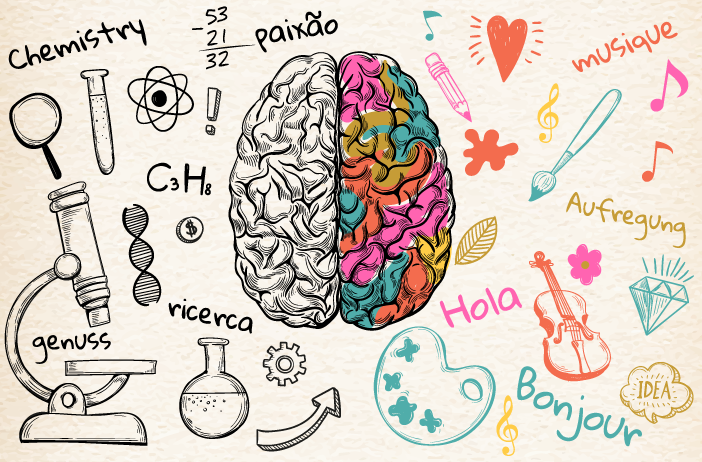Los mejores libros para aprender la gramática del español

Si estas buscando aumentar tu practica de gramática fuera de la clase los siguientes libros sobre la gramática del español los recomiendo a mis estudiantes como un complemento a las clases de español. Por ello, me gustan los libros de Gramática de Uso del Español (Editorial SM) porque son la añadidura perfecta para tus clases de español. Gramática de uso del Español. A1-A2: Teoría y práctica Una gramática para el aprendizaje del Español como lengua extranjera que ofrece un recorrido completo por las cuestiones esenciales de la gramática de los niveles A1 y A2 del Plan Curricular del Instituto Cervantes. Se puede utilizar como material de apoyo o como material de autoaprendizaje. Gramática de uso del Español. B1-B2: Teoría y práctica Gramática práctica con explicaciones claras y sencillas – Recorrido completo por las cuestiones esenciales de la gramática de los niveles B1 y B2 del Plan Curricular del Instituto Cervantes. Con más de 400 ejercicios, con modelo de respuesta y soluciones. Gramática de uso del español: Teoría y práctica C1-C2 Gramática práctica con explicaciones claras y sencillas – Recorrido completo por las cuestiones esenciales de la gramática de los niveles C1 y C2 del Plan Curricular del Instituto Cervantes. Mas de 400 ejercicios. Gramática de uso del español: Teoría y práctica A1-B2: Gramática de uso Recorrido completo por todas la gramática desde un nivel A1 hasta B2. Numerosos ejemplos de uso. Dibujos para ilustrar y facilitar la comprensión de las explicaciones gramaticales. Más de 125 páginas de ejercicios.
5 tips to learn languages easier and faster

Learning a second language requires an evolutionary process. It has been proven that doing so during childhood facilitates the acquisition of the necessary knowledge to speak other languages fluently. But, whatever the age, learning a second language requires a study structure that produces results, with a teacher as a guide in this process. For this reason, it is important to define the language learning objectives clearly, as well as to establish what the student’s priorities are. That is why I will recommend 5 ways to learn a language easier and faster: 1. Find an Online Tutor to Speak With Each Week If we are looking for fluency at any level, this point is important. The fact is that having an online tutor will increase your results compared to being in a classroom because in a classroom you focus on teaching several students at eleven with few interactions, but in an individual section, you have the opportunity to listen, talk more and solve your grammatical doubts, it will undoubtedly be more interactive. 2. Read and write Reading in a foreign language that you want to learn or improve is one of the most obvious advantages when we read in the language that is being studied, it is a good way to learn new words. Books, articles, exercises, or any other reading tool are unlimited sources of words to learn and expressions to retain. The more you read, the richer your vocabulary becomes. And of course, writing is an excellent tool to exercise memory, it can be very easy, you don’t need to write many things, it can be writing verbs, a summary of the class you had, describing your family or simply what you did that day. 3) Use the Repetition Memorization is one of the fundamental elements in all learning of a foreign language. Our brain is not prepared to easily retain a large amount of information. Therefore, it is best that you optimize the task with techniques that work and are scientifically supported, such as repetition. Repetition is one of those essential techniques for rapid memorization, and it is especially useful for learning vocabulary in record time. This concept arises from the English Spaced Repetition System (SRS) and is based on making repetitions in short and constant time intervals. repeating something will help us learn or retain. You can put it into practice either by reading a list of verbs several times from your phone, from an application, or from your notebook. 4) Use Language Exchanges to Speak to Native Speakers Learning this language with native speakers has many advantages since you will learn it in a more natural way, with the correct stress and intonation, you will get to know part of their culture, as well as the use of idioms. Native teachers have a greater command of the language and consequently a better and more natural pronunciation than a teacher who has acquired the language as a second language. Then, they will not only help you familiarize yourself from the beginning with the sounds, intonation, and correct pronunciation of words, but they will also be able to correct you more effectively. 5) Create the habit of studying Spanish This can be difficult and a bit frustrating if our level is basic or intermediate, however, habits are the ways in which our brain increases productivity. When we do a new task, at first we use a lot of energy and effort to carry it out. As this task is repeated, and once we understand how it works, the brain will begin to do it unconsciously, freeing up more space for thought.
